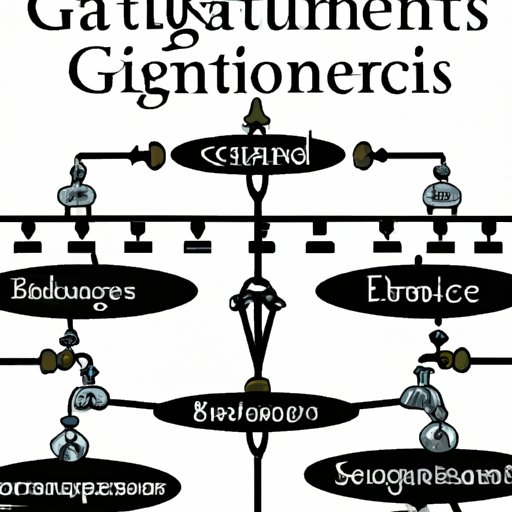Introduction
The United States government is divided into three branches: the legislative, executive and judicial. Each branch has its own specific responsibilities and powers, and together they form a system of checks and balances that ensures no one branch has too much power. This article will explore which branch has the most power by examining the roles of each branch in governance, constitutional authority and power, checks and balances, and limitations on branch authority.

An Analysis of the Balance of Power Among Branches of Government
The first step in determining which branch of government has the most power is to examine the roles of each branch in governance. The legislative branch, or Congress, is responsible for creating laws, while the executive branch, or the President, is responsible for enforcing those laws. The judicial branch, or the Supreme Court, is responsible for interpreting the law. Each branch has its own unique authority and powers, but the Constitution grants all three branches the same level of authority, making it difficult to determine which branch has the most power.
The Constitution also outlines the specific powers of each branch. The legislative branch has the power to make laws, raise taxes, declare war, and ratify treaties. The executive branch has the power to enforce laws, appoint judges and ambassadors, grant pardons, and command the military. The judicial branch has the power to interpret laws, issue rulings, and resolve disputes between states or individuals.
These powers are balanced by the system of checks and balances that exists between the branches. For example, the president can veto legislation passed by Congress, but Congress can override the veto with a two-thirds majority vote. The Supreme Court can also review the laws passed by Congress and determine if they are constitutional. This system of checks and balances helps to ensure that no one branch has too much power.

How the Separation of Powers Benefits Society
The separation of powers among the three branches of government benefits society in several ways. First, it ensures that no one branch has too much power. This prevents any one branch from becoming overbearing or tyrannical. It also encourages deliberation and compromise among the branches as they work together to pass laws and resolve disputes. Finally, it allows for greater accountability and transparency in government, as each branch is independently responsible for its own actions.
A comparison of the levels of power held by each branch reveals that the legislative branch has the most power. This is due to the fact that Congress has the power to pass laws and override presidential vetoes, while the executive branch and judicial branch are limited to enforcing and interpreting the laws passed by Congress. This does not mean that the other branches do not have any power, however. All three branches must work together in order to effectively govern the nation.
Necessity for Equal Branch Authority
The Constitution provides for an equal distribution of power among the three branches of government. This is necessary in order to ensure that no one branch has too much power. To this end, the Constitution imposes certain limitations on the powers of each branch. For example, Congress cannot declare war without the consent of the President, and the Supreme Court cannot overturn a law without a majority ruling. These limitations help to ensure that the power of each branch is balanced and that no one branch has too much power.
In addition to the limitations imposed by the Constitution, there are also other types of limitations on branch authority. For example, Congress can only pass a law if it has the support of both houses of Congress, and the President can only use the power of the veto if he or she believes a law is unconstitutional. These limitations help to ensure that the power of each branch is properly balanced and that no one branch has too much power.
Conclusion
In conclusion, this article has examined which branch of government has the most power by analyzing the roles of each branch in governance, constitutional authority and power, checks and balances, and limitations on branch authority. It has been found that the legislative branch has the most power due to its ability to pass laws and override presidential vetoes. However, this does not mean that the other branches do not have any power. All three branches must work together in order to effectively govern the nation, and the system of checks and balances ensures that no one branch has too much power. Further research should be conducted to explore how the balance of power among the branches of government can be improved.


